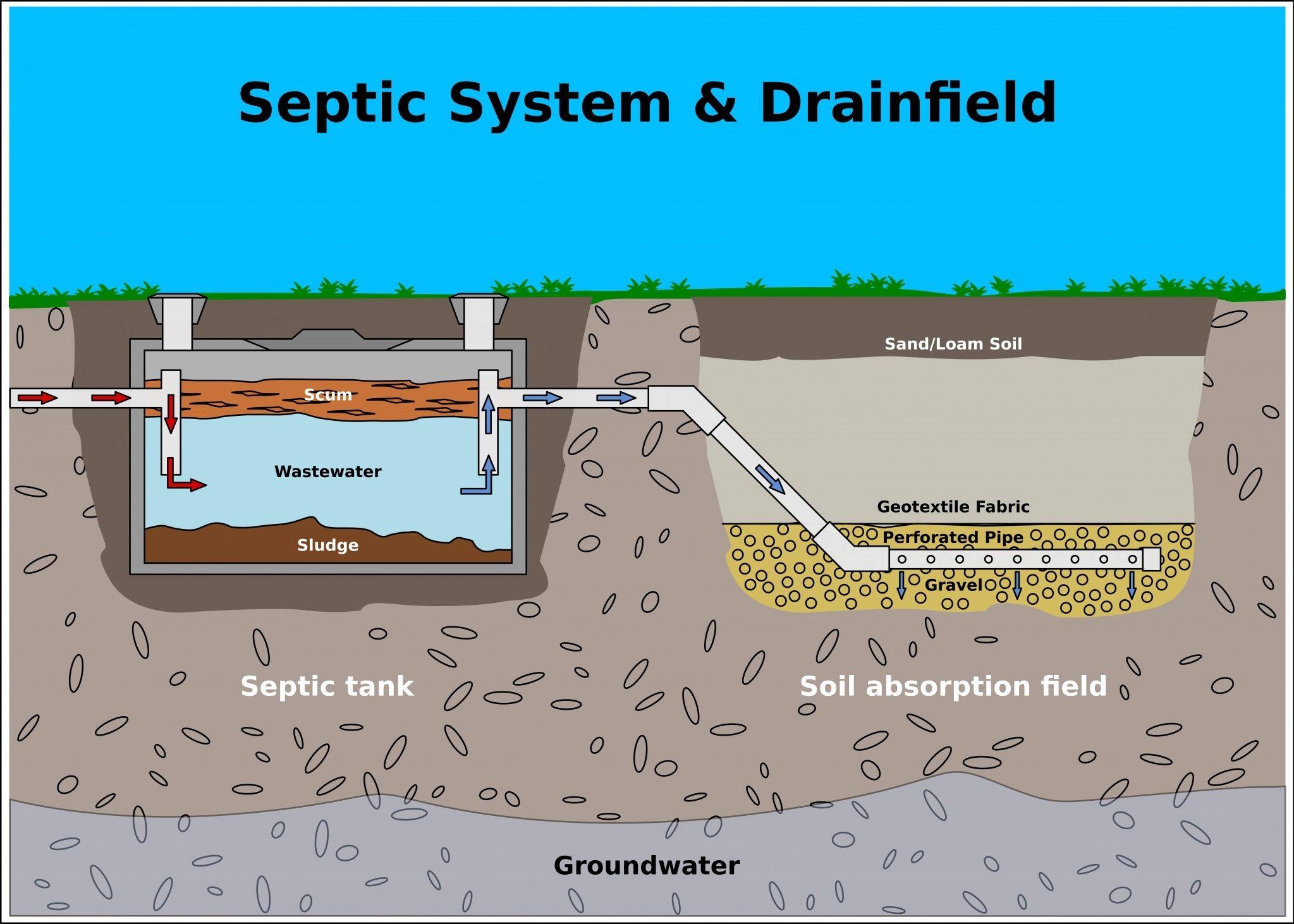Receive your free home designs brochuresRequest Now
Your Complete Guide to Septic Systems
Septic tanks are a primary treatment system for wastewater, mostly used where there's no access to sewerage mains. They are watertight tanks, usually made of concrete or plastic, installed underground. But let us unpack this further for you…
Posted On
- May 04, 2022

For properties unable to access a sewerage connection, having a reliable and well-suited septic system is an absolute must. You rely on it to effectively handle the contents of your toilet, shower, bath, washing machine and dishwasher, and any issues will cause major inconvenience and be costly to fix.
Before you purchase an unserviced block, it’s a good idea to have a chat to your builder to get a rough idea on the type of costs and potential challenges you might face, to avoid any surprises. Our team have plenty of experience helping clients in rural, coastal and outer urban areas navigate the process of installing a septic system, so if you’d like site or location-specific advice, please get in touch with the Tasbuilt team.
So, how does a septic system work?
A septic system consists of a septic tank and a drainfield, or soil absorption field. The septic tank digests organic matter and separates floatable matter, for example oils and greases, and solids from wastewater.
There are three types of septic systems and the type you will need for your block of land will largely depend upon the recommendation or requirements from your local authorities and the soil engineer. The soil engineer will design a system that is suitable to the site, including the secondary treatment area.

Types of Septic Systems
Standard Septic System (Dual Purpose)
This septic system generally consists of an inground concrete or plastic tank in which all effluent passes into and is treated (primary treatment) by bacterial activity. The out flowing effluent is piped to a system of underground absorption trenches or soakage beds (secondary treatment). This septic system is usually used on larger sites at least 10,000m2 and sites with good soil absorption capacity.
Advanced Enviro – Septic System (AES)
This septic system is like the above standard system. However, the out flowing (primary treated) effluent is piped to a special underground sand bed and pipe system in which it is treated (secondary treatment). It can be used on smaller sites than the standard septic system and with poorer soil quality. This option is generally more expensive.
Aerated Wastewater Treatment System (AWTS)
The AWTS consists of a more complex (generally in ground) tank where the effluent is treated both at primary and secondary stage by use of a system of chambers, with air and chemicals added. The outflowing treated effluent, which is relatively clean water, can then be piped to a system of in-ground soakage beds, or alternatively can be used on gardens or lawns via a suitable watering system. These systems require power connections to operate and will require regular maintenance by an approved person at least quarterly. These systems are preferred by councils and engineers and are more suitable for smaller sites less than 5,000m2 or sites with poorer soil absorption qualities.

That was your quick 101 guide to all things septic. While it may sound daunting and complicated… but we have an experienced team here at Tasbuilt Homes and we’re more than happy to conduct a free site inspection of your property to discuss services and connections, slope vegetation etc. Please reach out on 1800 639 310 – we’d love to help you start the journey towards your dream home!
And if you’re in the market for a septic tank, we highly recommend chatting to our fellow Tassie business, Orion Australia.

If there’s anyone that knows the ins and outs of a septic system, it’s them!
Archives
- 2025 (17)
- 2024 (27)
- 2023 (25)
- 2022 (23)
- 2021 (36)
- 2020 (47)
- 2019 (51)
-
2018 (58)
- December (3)
- November (3)
- October (4)
- September (5)
- August (3)
- July (5)
- June (4)
- May (4)
- April (7)
- Going to Agfest this year....? Take advantage of our extended hours...
- The best in flooring options....love the look!
- Destination Focus - Bicheno
- Destination Focus - Coles Bay
- Ways to keep your house kid friendly....and stylish at the same time
- A granny flat...studio...teenagers retreat....??
- Now Launching - The Binalong
- March (6)
- February (5)
- January (9)
- 2017 Tasmanian Tourism Awards & Tasbuilt Homes
- Summer Sangria
- Tasbuilt Decor Selections Are a Pleasure!
- Product of the month – Stainless Wire Balustrade
- Moving To Tasmania? We Are Here To Help!
- Your Questions On Waste Water Answered...
- House & Land Packages Available Now!
- A Guide to Interiors For 2018
- Happy New Year!
-
2017 (74)
- December (7)
- 2018 is coming...
- Tasbuilt wishes all our customers & suppliers a safe and enjoyable break
- Pack Your Bags For The Trip Of A Lifetime!!
- We wish you a prosperous new year!
- Delivery Stage Of Tasbuilt’ s King Island Project Now Complete
- Final Installment heading for King Island
- One day left! Winner announced tomorrow
- November (10)
- Just Arrived On King Island.....
- Tasbuilt wishes all our customers & suppliers a safe and enjoyable break
- 8 Top locations to visit in Tasmania this holiday season
- 5 minute chat with Mick Clarke - Tasbuilt's Onsite Manager
- Looking at building & not sure where to start?
- Tasbuilt Homes Releases New 'Luxmoor' Design
- Another Qualified Carpenter For The Tasbuilt Team
- Family Open Day Coming Soon!
- Ideas for your festive season
- Ideas for your outdoor entertaining areas
- October (7)
- Are you going to the Deloraine Craft Fair?
- Stunning land release in Lulworth, Northern Tasmania
- The colours everyone will be talking about in 2018
- Two of Tasbuilt’s Platinum Collection have now been installed in Conara
- Sheridan & Hardwicke plan on display!
- You can track the progress of your new home!
- Tasmanian investment opportunities are huge!
- September (4)
- August (6)
- July (4)
- June (5)
- May (6)
- April (5)
- March (4)
- February (6)
- January (10)
- 10 tips to creating a great study environment in your home
- Happy Australia Day from us all at Tasbuilt Homes!
- Have you booked in & stayed at the Big4 Launceston?
- We will build to your own design
- Tasbuilt is Partnering with First National
- The Best Things To Do In Tasmania
- How will you spend $10,000 at Harvey Norman?
- We manage your entire project
- Our team is focused on improving our customer service
- 2017 is here & Tasbuilt has something exciting to announce
- December (7)
-
2016 (45)
- December (6)
- November (4)
- October (8)
- Tips for building a low maintenance home
- Are you looking for....?
- Hardwicke Display Home
- St Anns Living welcomed two new residents
- Tasbuilt team hosted another BBQ night
- Low cost decorating ideas for your home
- Looking for land in Burnie/Wynyard area?
- 10 Reasons to choose Tasbuilt as your next builder
- September (8)
- Tips for designing your kitchen
- Styling tips for your Holiday Home
- Our car competitions is ending soon!
- Consider exterior cladding to set your home apart
- Tips for decorating your home’s interior during spring 2016
- Tasbuilt Consultants travel to you!
- Tips for spring cleaning your home
- HOUSE OF THE MONTH
- August (5)
- July (2)
- June (3)
- May (8)
- Tasmanian first home builders grant boosted
- Another home completed in our factory
- Have you downloaded a brochure from our website?
- Create your own floor plan at Tasbuilt Homes
- How Insulation Makes a House a Better Home
- The team at Tasbuilt are willing to help you!
- Reserve Bank cuts interest rates
- Are you visiting Agfest this weekend?
- March (1)
-
2015 (49)
- December (2)
- November (3)
- October (5)
- September (7)
- August (5)
- July (6)
- Tasbuilt hosted a BBQ night for all our Sub-Contractor
- VISIT OUR DISPLAY HOMES & WIN $ 1,000.00 GIFT VOUCHER
- Your school buildings outgrown? Or do they need a facelift?
- Tasbuilt announces the winners of the New Display Home competition
- Looking for a reasonably priced investment property?
- HOUSE OF THE MONTH
- June (8)
- Top 10 Reasons to choose Tasbuilt as your next builder
- Are you looking at building. . . is this your first time & not sure where to start?
- Another Satisfied Happy Tasbuilt Customer
- Tasbuilt Homes selected for 3rd Accommodation Unit in King Island
- Do you long to escape the hustle and bustle of city life?
- BOOK YOUR PERSONAL TOUR OF OUR DISPLAY HOMES
- Happy Tasbuilt Customer share their unique building experience
- West Tamar Highway at Lanena closed last night for House move
- March (3)
- February (6)
- January (4)
- 2014 (28)
- 2013 (13)

